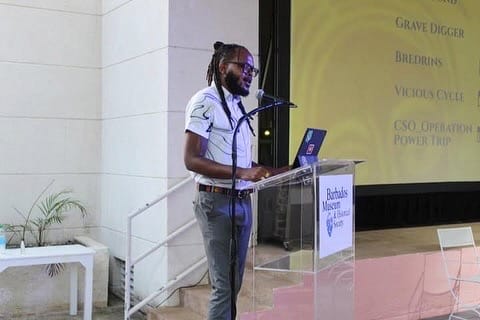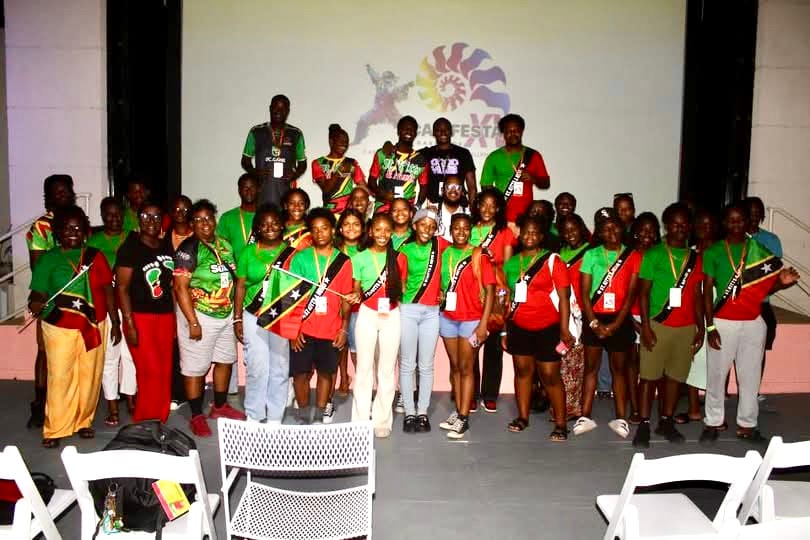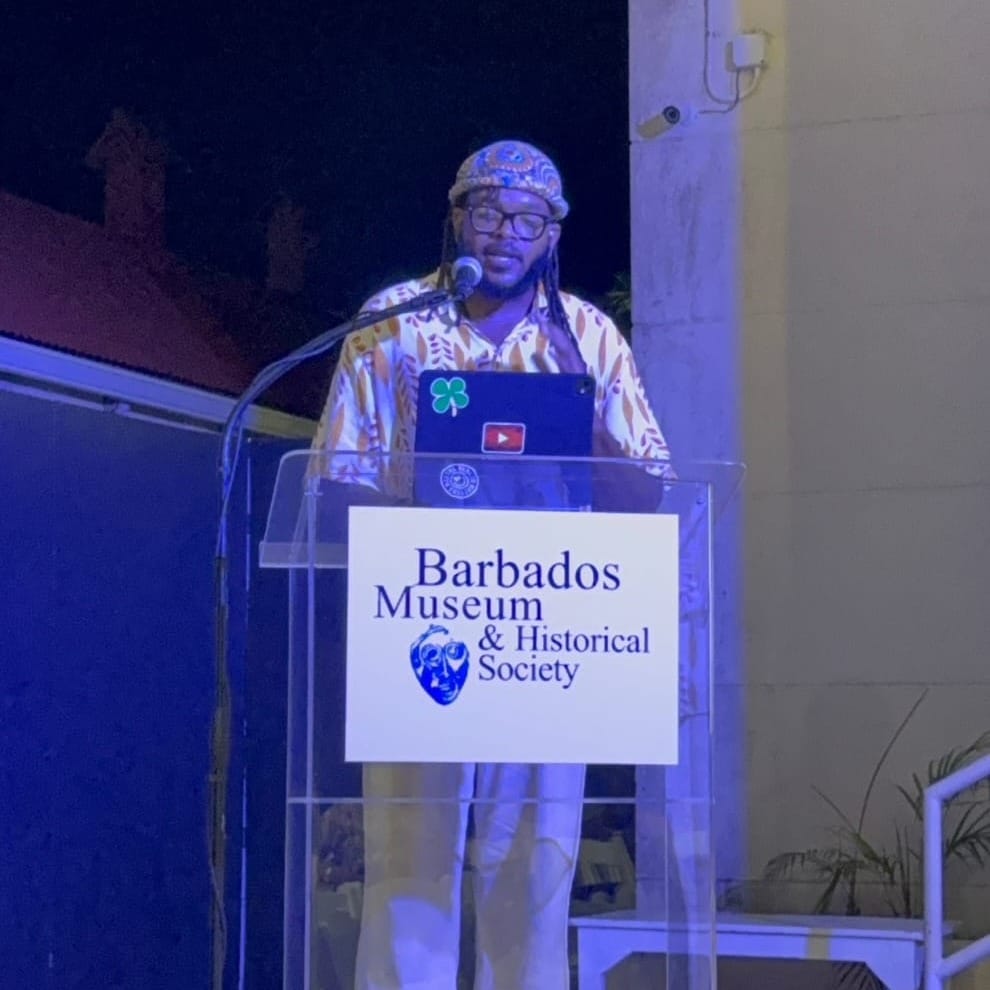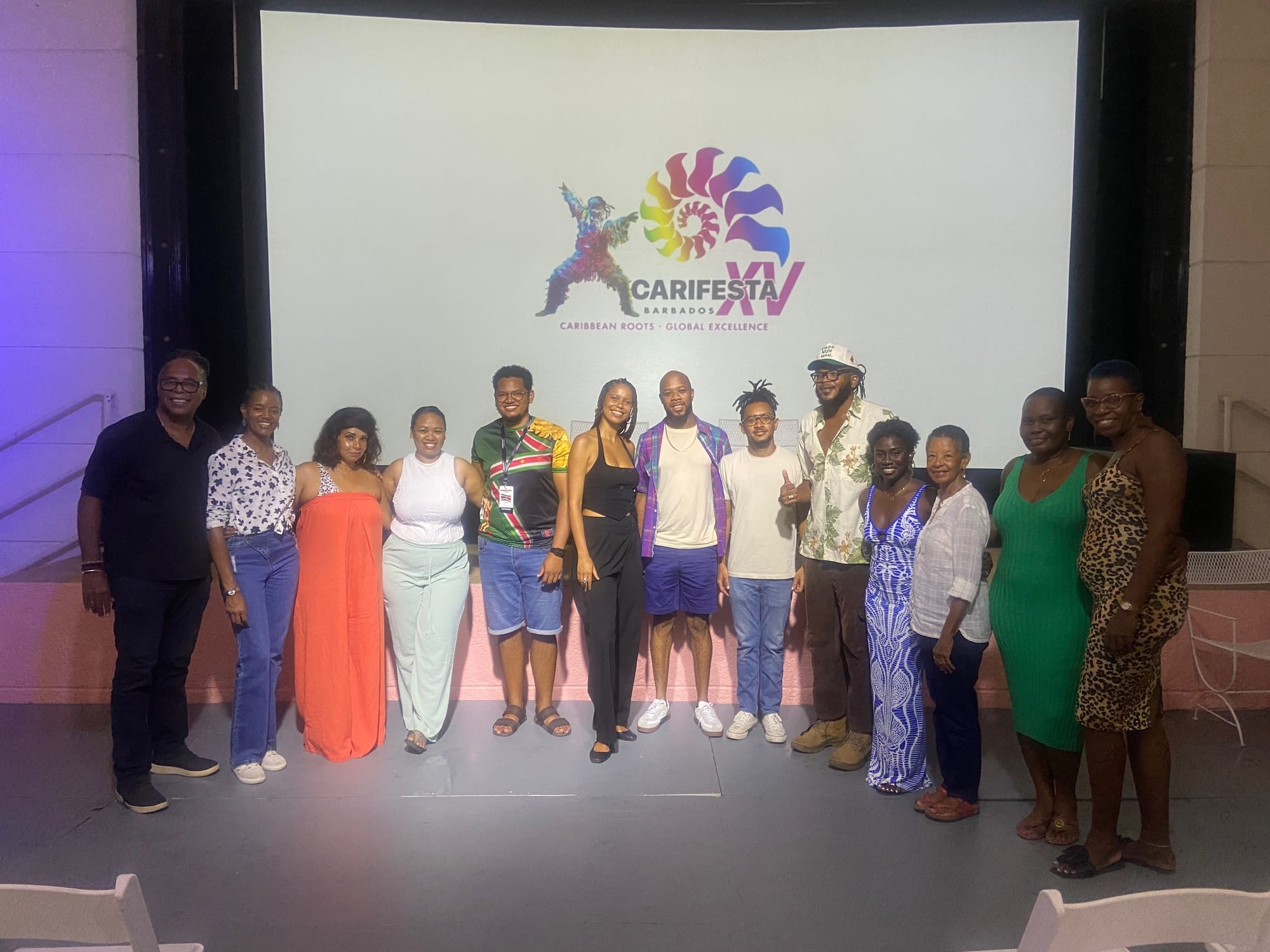Inside CARIFESTA 15 Film & Video Screenings: The Good, The Bad, and The Truth About Caribbean Cinema

On augaust 22nd , I had the honor of hosting the CARIFESTA XV Film & Video Screenings at the historic Barbados Museum & Historical Society. Five nights. Fifteen hours of cinema. Ten caribean countries. Over one hundred people gathered in the courtyard of a museum I once passed every day on my way to high school.
It felt like a full-circle moment. As a teenager at Garrison Secondary school now known as Graydon sealy secondary school, I often would pass the museum to get to school,how i had the amazing opportunity before work to study history, soaking in art, and piecing together what it meant to be Caribbean at the museum. I kept thinking about years later here i am, standing in that same area close to my old school introducing films from across the region, guiding audiences into conversations about who we are, where we come from, and where Caribbean cinema might go next. I was deeply honored.
A Week of Themes
Each evening I opened with a theme, framing the night so that the films were not just screenings but conversations:
- Shadows & Survival – stories of resilience and navigating unseen struggles.
- Ancestral Echoes – a call to our roots, spirituality, and the whispers of history.
- Cycles of Struggle & Power – morality, generational trauma, the fight for dignity.
- Dreams, Roads & Revolution – journeys of discovery, transformation, and change.
- Roots, Rhythms & Redemption – a close with identity, heritage, and healing.
These weren’t just titles; they were reflections of the heartbeat of our cinema. Caribbean films often carry weighty themes — survival, identity, history, trauma, and love — as if each story is both a record and a form of healing. Watching audiences connect with these films reminded me that our cinema is less about spectacle and more about catharsis.
Moments that Mattered

Day One started strong with nearly eighty people filling the courtyard. By Day Three, the delegation from St. Kitts and Nevis came out in full force to support their filmmakers, filling the museum with energy and pride. By Day Four, a filmmaker from Suriname and another from Trinidad & Tobago joined in person — and suddenly the courtyard felt like a miniature Caribbean village, complete with a Guyanese Captain Jack Sparrow wandering around between screenings.

These nights weren’t about numbers alone (though we did tally 122 guests across five evenings). They were about encounters. A stranger pulling me aside to say how good it felt to hear their own accent on screen. A young filmmaker asking how to shape their first short. Conversations that stretched long after the projector dimmed.
Reflections on the Flaws
Of course, the screenings weren’t without their flaws. Marketing fell short, coordination with filmmakers wasn’t as strong as it could have been, and communication gaps left opportunities untapped. These are not small matters — if we want Caribbean cinema to thrive, we need to design a proper action marketing plan that heavily involves both the filmmakers and the CARIFESTA team. The filmmakers are the best advocates for their own work; giving them the tools and platforms to share their films in advance would amplify the reach of the festival. Cross-promotion, tighter scheduling, and earlier outreach could build momentum, instead of scrambling in the final days.
And then there’s the reality of what it means to work as a creative on a small island. A month later, I still hadn’t been paid — despite showing up early every day, treating the opportunity with the seriousness it deserved, and committing to the work as though it were the global stage it claimed to be and was. However not even a snack or piece of bread offered no food or drink provided for the staff and crew who held things together bts at the venue was kinda lackluster. None of this stopped me from handling myself with professionalism — I don’t carry a stick so far up my ass that I can’t roll with the punches — but it was tad bit disappointing. Becasue lets be real the slow processing of payments hits hard when you’re living as a creative in Barbados and the Caribbean, where resources are already stretched and opportunities are rare.
That said, I also understand the rhythm of our region. Things happen late. Sometimes, they couldn’t have been avoided. We move on island time — and when you gather artists and creatives from across the Caribbean, that time bends even more. Maybe, compared to global standards, we aren’t “there yet.” But I’ll play good instigator and say: maybe who we are is just fine. We’ve always related to time differently. Since our ancestors, we’ve been measuring, resisting, and remixing time in ways that don’t always fit neatly into outside expectations.
Still, if we are serious about taking our cinema to the next level, we have to strike a balance. Grace for how we naturally move, yes — but also a commitment to better communication, less ego, and raising the standard for professionalism. Not just for the optics, not just to look polished in the eyes of the world, but for the real craft. For the films themselves. For the stories we are entrusted to tell.
Why Our Cinema Matters
Caribbean cinema isn’t blockbusters or Bollywood dance numbers. It doesn’t have the scale of Hollywood or Nollywood. But what it does have is truth. Our films speak in accents rarely heard on screen, grounded in cultural rhythms and norms that are uniquely ours. They confront history, colonial legacies, survival, migration, spirituality, love, and struggle. They force us to look at ourselves and, in doing so, offer us ways to heal.
That’s what I saw over those five nights: the Caribbean using cinema as therapy, as archive, as dream.
A Personal Turning Point

For me, hosting CARIFESTA XV wasn’t just about introducing films. It was about reconnecting with the reason I became a filmmaker. Sitting there each evening, after arriving early to study in the museum’s halls, I felt myself incubating in inspiration. I leave this experience renewed, ready to push forward with Voice of the Ocean, my debut feature film.
Cinema in the Caribbean is rising. Slowly, steadily, defiantly. And as the next generation takes the stage, I hope one day my own work will join this chorus — stories spoken in our tongue, from our perspective, for the world to hear.

Because if there’s one thing these five nights confirmed, it’s this: our stories matter. And telling them is an act of survival, resistance, and love.
Films Screened at CARIFESTA 15: Film & Video Program at the barbados museum and historical society
- Exit Wound — Hakeem Gravesande
- Grave Digger — Gabrielle Blackwood (Jamaica)
- Bredrins — Amir Aether Valen (Trinidad & Tobago)
- Vicious Cycle — Steven Edwards (Trinidad & Tobago)
- CSO_Operation Power Trip — Naeem Richardson, Jahavid Allen
- Shawt Shorts — Brianne Stewart
- 5min — Quincy Alvares
- Undefined — Kharlani Rivers, Nyalia Callwood
- The Roads We Travel — Mary Cecilia Walker (Barbados)
- She Paradise — Maya Cozier (Trinidad & Tobago)
- Not a Generic Gombey — Qian Dickinson, Carlita Lodge (Bermuda)
- Sonshine — Kaleb D’Aguilar
- Shantaye’s World — Mathurine Emmauel (St. Lucia)
- A Shade of Indigo — (Jamaica)
- 21 Days — (St. Lucia)
- A Rock and a Hard Place — (Barbados)
